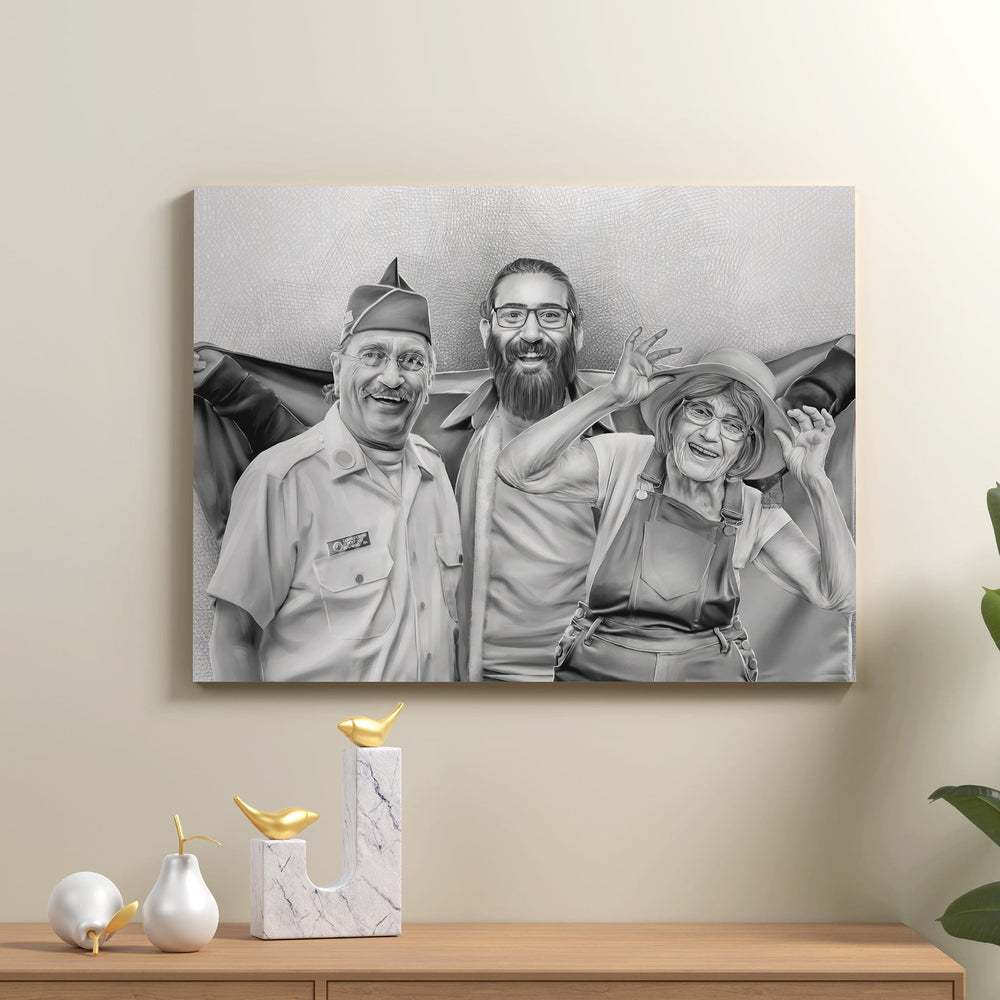7 Types of Painting Techniques Every Artist Must Know

Are you looking for a comprehensive list of the essential painting techniques that every artist should be familiar with?
Painting techniques allow you to create texture, depth, and harmony in your artwork; they also provide ways to mix colors and create effects that can't be achieved any other way. A good understanding of painting techniques can open up new creative possibilities and help you reach your full artistic potential!
Different Painting Techniques
Different painting techniques allow artists to explore their own ideas and express their unique visions while harnessing the beauty of different mediums. Here are some of the most common painting techniques utilized by painters.
Brushwork

Uses brushes and other tools to apply paint in strokes, dashes, lines, and other shapes.
Brushwork can create texture, contrast, and volume in a painting much faster and simpler than stippling. You can quickly achieve interesting shapes, shadows, and highlights by using brushes and other tools to apply paint in strokes, dashes, lines, and other shapes.
Brushwork has been used for centuries, with the earliest examples seen in works from the Renaissance.
Impasto
Impasto gives a painting an incredibly vivid and textured look. By applying thick layers of paint, the artist can create three-dimensional shapes, shadows, and highlights that give an artwork greater depth.
This painting technique dated back centuries and was popularized during the Baroque period by master painters like Rembrandt and Caravaggio. Today, prominent artists such as Jean-Michel Basquiat and Jackson Pollock are known for heavily utilizing this technique in their artworks.
Scumbling
Scumbling creates a soft and luminous quality to a painting while allowing for more precise control over the shape and form of a subject. This technique involves applying thin layers of pigment over a dry underlayer.
This has been around since the Renaissance period, with prominent artists such as Titian and Vermeer using this technique to create light effects in their paintings.
Color washing
Color washing allows artists to create highly nuanced and complex layers of color on canvas and wall surfaces. This technique involves dabbing wet paint onto dry paint and blending two colors.
Color washing has been around since the Victorian era, with prominent art movements such as Impressionism popularizing this style. Today, artists like Claude Monet and Pierre-Auguste Renoir are well known for using this technique.
Spattering
This technique uses an airbrush tool and splatter screens to achieve an interesting effect on a surface.
The advantage of spattering is that it creates dynamic and interesting textures on a surface. This technique involves using an airbrush tool and splatter screens to achieve the desired effect. Spattering has been around since the 18th century, with prominent artists like Paul Cezanne known for utilizing this style in much of his work.
Stippling
By applying small dots of paint to create texture and volume in a painting, you are using the stippling technique.
The advantage of stippling is that it can create a unique texture and volume in a painting. By applying small dots of paint closely together, you can create an interesting depth of field and contrast. Stippling dates back centuries and can be seen in works from the Renaissance.
Dry Brushing
The dry brushing technique is done by lightly dragging a brush over the canvas or paper to create thin lines and textures without using any water or mediums added to the paints used for this technique.
Dry brushing allows artists to achieve a unique, textural look on a canvas or paper. This technique involves lightly dragging a brush over the surface without needing any water or mediums added to the paints.
Dry brushing has been around since the late 18th century, with artists like Jean-Baptiste Greuze becoming known for using this style in some of their works. Today, modern and contemporary artists such as Mark Rothko are renowned for using this technique in their paintings.
What is the most common painting technique?
The most common painting technique is using a brush and oil or acrylic paints to create works on canvas, paper, or other surfaces. This technique involves applying pigments directly to the surface with a brush or palette knife, allowing for great control and flexibility when creating artwork.
What is the hardest painting technique?
One of the most difficult painting techniques is En Plein Air painting. This technique involves painting outdoors in natural light, often with the intention of capturing a moment in time. This requires the artist to be comfortable working quickly and accurately, as well as having an understanding of light and color dynamics in ever-shifting conditions.
What is the easiest style of painting to learn?
For those just starting, acrylic painting is often considered one of the easiest techniques to learn. Acrylic paints are water-based, so they can be easily blended and manipulated with a brush or palette knife. This makes them perfect for learning basic techniques such as blending, shading, and highlighting.
Artwork with a Heart from Memorialize Art
If you want to share a memorable artwork with someone special in your life, you can find various options at Memorialize Art. We have different options for you to choose from, which will surely make someone's day a whole lot sweeter.











